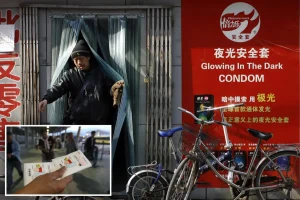China’s Economic Balancing Act: Trade Gains Amid Housing Concerns
China’s economy continues to navigate challenging waters as a widening trade surplus provides some relief but cannot fully counterbalance the persistent troubles in the housing sector. Recent economic data reveals that while exports have shown resilience, contributing to a growing trade surplus, domestic consumption remains subdued. The housing market downturn has cast a long shadow over consumer confidence, leading many Chinese households to tighten their purse strings despite government efforts to stimulate spending. This economic imbalance highlights the complex challenges facing policymakers as they attempt to transition from export-driven growth to a more consumption-based economic model.
The property market, once a cornerstone of China’s economic miracle, continues to struggle with falling prices, stalled construction projects, and developer defaults. This sector’s difficulties extend beyond immediate economic indicators, creating a psychological impact that has made consumers increasingly cautious about major purchases and investments. Many families, having tied their wealth and future prospects to real estate values, now find themselves reluctant to engage in discretionary spending as they witness property values decline. The government’s attempts to revive the housing market through policy support have yielded limited results thus far, as the underlying issues of oversupply and eroded trust require more fundamental solutions than short-term interventions.
While the trade sector has performed admirably, with exports showing unexpected strength in recent months, this external demand cannot fully compensate for weakened domestic activity. China’s growing trade surplus reflects both the competitiveness of its export industries and relatively weaker imports due to sluggish domestic demand. This imbalance, though positive for headline economic figures, underscores a fundamental challenge: the economy remains overly dependent on external markets at a time when global trade tensions and protectionist policies create significant uncertainties. Policymakers recognize that sustainable growth ultimately requires stronger domestic consumption, which has been hampered by housing market concerns.
Consumer wariness extends beyond housing-related spending to broader retail activities, creating a cycle that further complicates economic recovery efforts. Recent surveys indicate that Chinese households are increasing their savings rates, preparing for potential economic difficulties rather than contributing to economic circulation through consumption. This cautious approach reflects both practical financial considerations and deeper concerns about future economic stability. Young consumers, in particular, face a challenging employment landscape that further constrains their spending power and willingness to commit to major purchases. The resulting atmosphere of economic caution presents a significant challenge to stimulating the domestic demand that would help rebalance the economy away from its export dependence.
Government officials have responded with various policy initiatives aimed at boosting confidence and encouraging spending, but these measures face the headwind of deeply entrenched consumer concerns. Recent stimulus packages have included targeted support for first-time homebuyers, reduced interest rates, and consumption vouchers in certain regions. However, these interventions have not yet triggered the desired spending response, as consumers remain focused on financial security in an uncertain environment. The challenge for policymakers lies in addressing the structural issues undermining confidence while providing sufficient short-term support to prevent further economic slowdown. This delicate balancing act requires coordinated action across multiple policy domains, from financial regulation to social security enhancement.
Looking ahead, China’s economic trajectory will depend on how effectively it can resolve the housing market overhang while nurturing new sources of growth and consumer confidence. The current situation highlights the limitations of relying on exports and infrastructure investment as primary growth drivers, reinforcing the need for economic rebalancing toward consumption and services. Successfully navigating this transition requires not only addressing immediate market concerns but also implementing deeper reforms that enhance household income security and create a more sustainable growth model. While the expanded trade surplus provides valuable economic breathing room, China’s longer-term prosperity will ultimately depend on rebuilding consumer confidence and creating the conditions for robust domestic demand. The coming months will reveal whether policy adjustments can begin to restore the confidence needed for consumers to move beyond their current caution.










